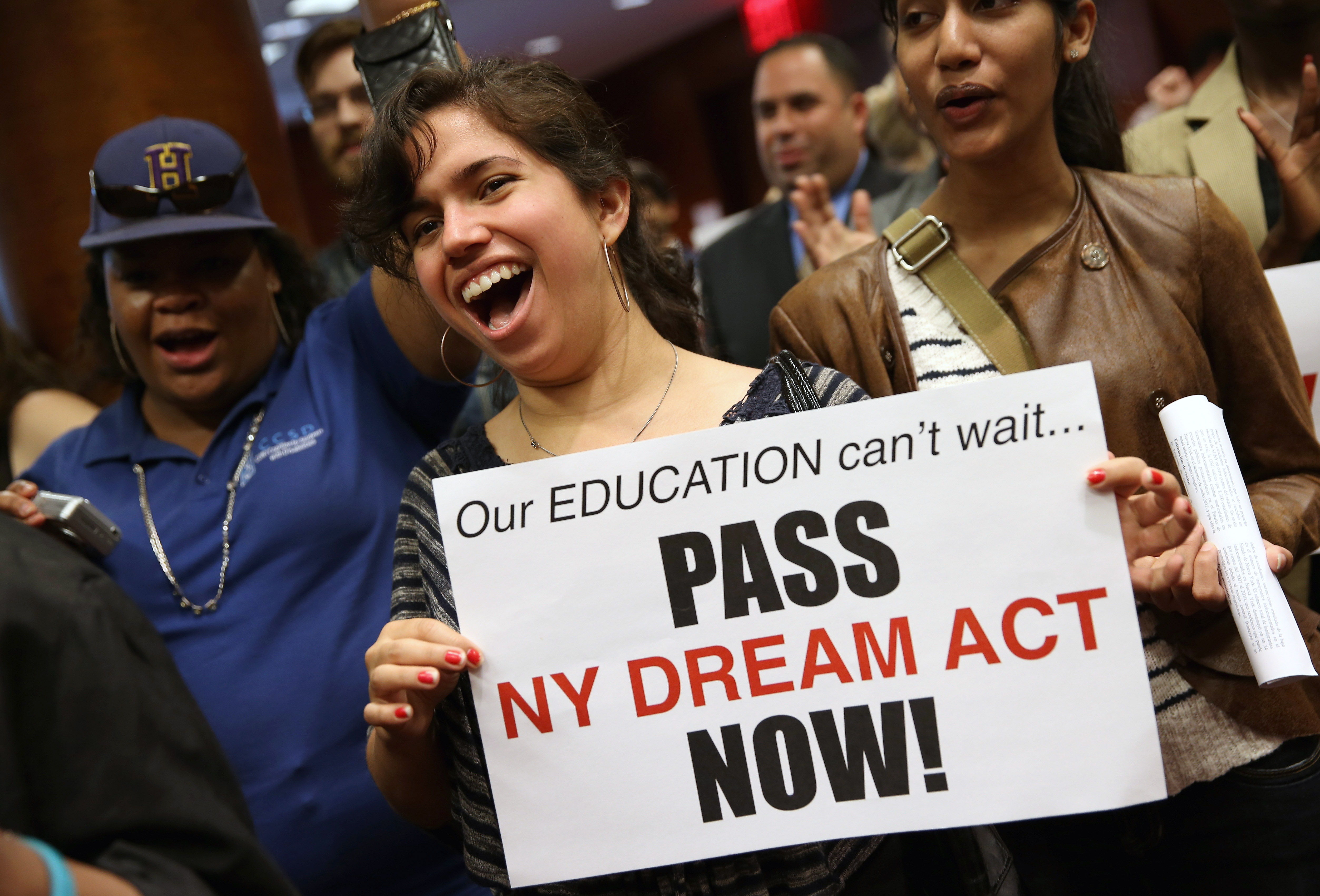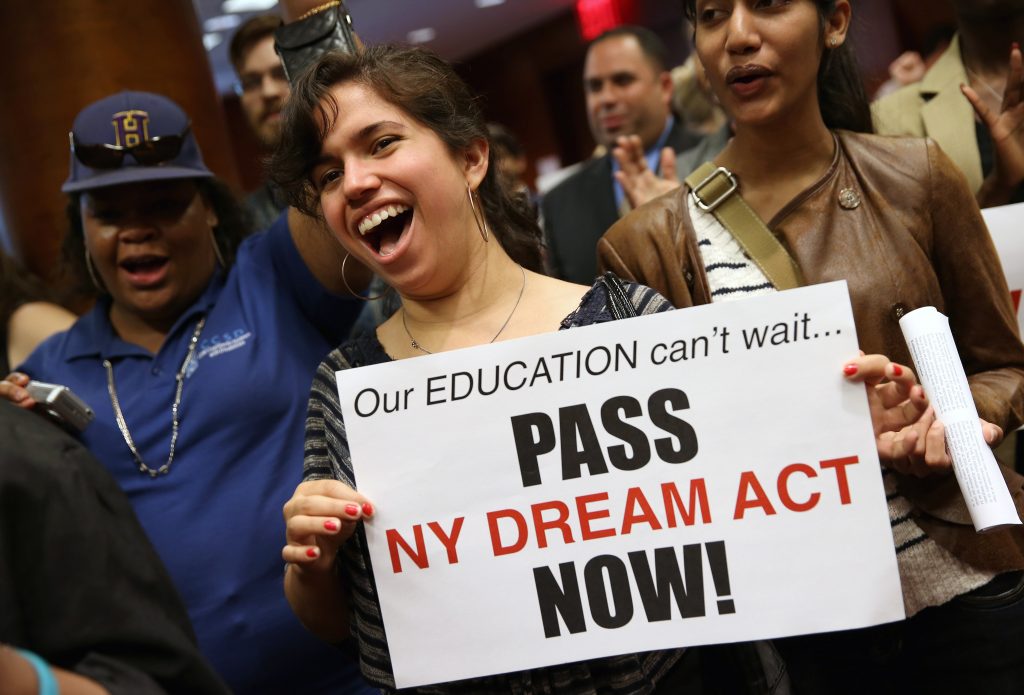For many members of New York’s undocumented community, today was long overdue. Several years have passed since the initial proposal of the New York Dream Act, and today, it finally passed.
While the New York Dream Act does not help this community adjust their status, it does help make higher education more accessible. Here’s what you should know.
1
It was introduced in 2013.
Senator José Peralta and former Assemblyman Francisco Moya first sponsored the bill in 2013. In March of that year, Peralta explained the NY Dream Act as a way to “[push] the American Dream.” He explained that children who came to the United States benefited from the school system in the state, but then were unable to pursue higher education.
“As they grow up, they will now have the opportunity to attend college,” he told WAMC. “There’s a system that will be in place, where we can find $25 million, like the Assembly did, to pay for TAP tuition assistance for anyone who is in this situation, so that they can attend college.”
The bill is named the Jose Peralta DREAM Act to honor the senator, who died last year.
2
It's been included in every budget proposal since 2015.
Since 2015, Gov. Andrew Cuomo has included the bill in his executive budget proposal. But, as City & State NY reports, it “has always been removed during negotiations, allowing Republicans to avoid voting against parts of the budget.”
State Senator John Flanagan explained in 2017 that “our members are very strongly opposed to the DREAM Act. I’m going to put it in plain and simple terms: There’s ton of middle class families in the state of New York who are struggling. I met with college students who are working two and three jobs just to go to community college. So my primary obligation, and I think the position of our members is, let’s make sure we’re taking care of the hard-working middle class taxpayers who are struggling right now.”
The Assembly has passed the legislation several times.
3
It does not create a path to citizenship.
While the nationwide DREAM Act (Development, Relief, and Education for Alien Minors Act), which has never passed, offered residency for qualifying minors, the New York DREAM Act does not. Instead, it gives more rights to undocumented students. In 2001, New York made undocumented immigrants eligible for in-state tuition.
With the DREAM Act, undocumented students who attended a New York high school for at least two years will have the Excelsior Scholarship, the New York State Tuition Assistance Program (TAP), and other programs available. The NY DREAM Act will also create a DREAM Fund – funded completely by private donations – which would provide more scholarships available to this community.
4
There are a few eligibility requirements.
The NY DREAM Act will be available to students whom:
- “Attended an approved NYS high school for two or more years, graduated from an approved NYS high school and applied for attendance to a NYS college or university within five years of receiving their NYS high school diploma; or
- “Attended an approved NYS program for a state high school equivalency diploma, received their state high school equivalency diploma and applied for attendance to a NYS college or university within five years of receiving their state high school equivalency diploma; or
- “Are otherwise eligible for in-state tuition at SUNY, CUNY or community colleges as prescribed by their admission criteria.”




